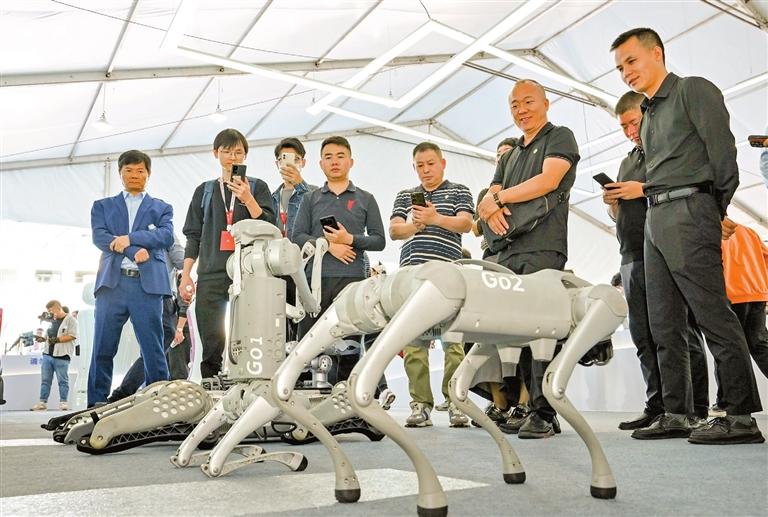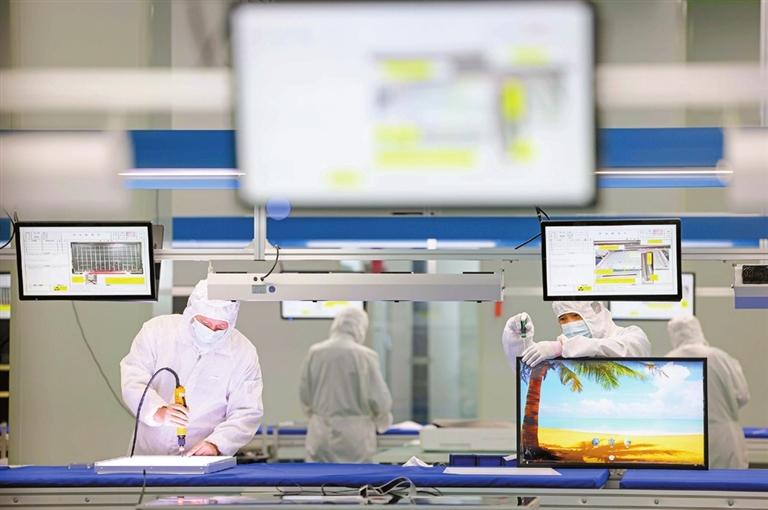

FROM an “artificial sun” setting global records in nuclear fusion to a deep space exploration lab supporting China’s moon missions, and a quantum computer prototype capable of solving intractable problems 10 quadrillion times faster than the world’s fastest supercomputers, Hefei has made extraordinary accomplishments. Once a relatively inconspicuous inland city, Hefei, the capital of East China’s Anhui Province, now thrives as a hub of cutting-edge science and technology, as well as dynamic tech-intensive industries. This transformation emerged as China pursued a wide range of reforms over the past decade, aiming to propel its economy towards innovation-driven growth and higher overall quality. Much of the city’s success has been attributed to what scholars refer to as the “Hefei model,” an approach that effectively melds the roles of State-owned capital and private enterprises to foster new industries. “The ‘Hefei model’ signifies a pathway to economic growth for underdeveloped cities. It is the result of extensive local government initiatives that have adeptly balanced governmental intervention and free market dynamics,” said Liu Zhiying, a professor at the School of Management, University of Science and Technology of China (USTC). During the past decade, Hefei’s economic output skyrocketed to over 1 trillion yuan (US$140 billion) from around 400 billion yuan, placing it among the fastest-growing cities in the country. Strategic emerging industries now contribute to more than half of its industrial output, which surged by 9.7% year on year in the first 10 months of 2023, marking the highest growth in nearly 19 months, outpacing the national total. A success story A significant aspect in the city’s success has been the deepening reform of State-owned capital management. State investments have been injected into leading enterprises within emerging industries, which are deemed strategically important but are often considered too risky or costly by private investors. As these companies’ market prospects become clearer and draw interest from non-government investors, State capital gradually exits these ventures. The returns on State investments are then reinvested to support further projects within the industry, fostering a resilient industrial chain. This process cultivates a healthy industrial ecology, attracting additional external investment, technologies, and talent, thus forming a self-sustaining cycle. NIO, one of China’s fastest-growing electric vehicle manufacturers, exemplified this approach by securing billions of yuan of State capital investment from Hefei in 2020 during a period of uncertainty. Following this support, NIO’s share prices rebounded significantly, prompting the local government to divest a portion of its stakes and invest in a new industrial park for smart electric vehicle manufacturing, aiming to ensure sustained industry development. “Hefei serves as a good example of successfully integrating an efficient market with a well-functioning government,” said Jessie Wu, NIO’s vice president in charge of industrial planning. “The local government exited its position even as our share prices continued to rise because its objective was to bolster an entire industry rather than maximize profits. The government maintains stakes, but our operations are independent, free from interference from the authorities.” As an underlying rationale for the deepening reforms over the past decade, China seeks to ensure that the market plays a decisive role in resource allocation, while the government optimally fulfills its role. Over the past decade, Hefei has invested over 160 billion yuan of State capital into strategic emerging industries, yielding nearly 60 billion yuan in earnings and catalyzing over 620 billion yuan in total investment, as per local authorities. Additionally, the local government has spearheaded the formation of a diverse “jungle of funds” catering to enterprises’ varying investment needs across different developmental stages, amassing a total scale of over 170 billion yuan, exhibiting a higher risk tolerance compared to many other cities. Zhang Yi, Party secretary and director of Hefei’s State-owned assets supervision and administration commission, said that State capital investment choices have been market-oriented. Investment officials have a profound understanding of market dynamics and industrial trends, whose decision-making is assisted by evaluation from prominent consulting firms, alongside thorough due diligence and legal reviews. In fact, some have likened Hefei’s administration to a “team of investment bankers.” “We have become a bellwether of investment. If our State investment targets certain projects, they are likely to attract a multitude of non-government investors,” Zhang said. An empowering bridge In addition to state capital investment, Hefei’s government has undertaken substantial reforms. The city has established dedicated municipal-level committees to drive sci-tech innovation and foster strategic emerging industries. Yuan Fei, a member of the standing committee of the municipal Party committee and vice mayor of Hefei, emphasized the need to mobilize citywide resources to support these sectors, noting their extended development timelines before yielding returns and the substantial uncertainties they face. “It’s like initiating physical reactions first until chemical changes occur, rendering them appealing to the market,” he said. Covering an area larger than 1,700 soccer fields, one of the world’s largest city parks in Hefei has been transformed into an expansive testing ground for futuristic self-flying taxis, autonomous buses, and drones facilitating takeout deliveries. This is one of the “super scenarios” created by local authorities for tech firms to trial new technologies prior to commercialization. A specialized agency has been set up to address the demand for application scenarios, which are often a luxury for startups and researchers but pivotal for their commercial prospects. This year, over 160 tech companies have been granted access to various application scenarios to pilot their technologies and products, as reported by the Hefei Development and Reform Commission. Yuan emphasized the pivotal role of the government as a bridge between scientific and industrial innovation: “We perceive science and technology as tools to buttress industrial development, making development our foremost priority.” In its endeavor to pitch innovative projects with investors at both domestic and global levels, the government arranges road shows and competitions of varying scales. It has also set up more than 50 joint R&D agencies with universities and research institutes, fostering the development and commercialization of their research findings, thereby nurturing over 1,400 high-tech firms to date. Hefei’s pursuit of industrial opportunities in science and technology has yielded remarkable results. The city now boasts a world-class new display industry, with an annual output surpassing 100 billion yuan, a thriving new energy vehicle sector that has attracted substantial investments from Volkswagen, and one of the nation’s most rapidly expanding chip-making clusters. Nationally, comprehensive structural reforms aimed at establishing a foundational system for all-around innovation have taken effect, propelling China’s ranking on the Global Innovation Index from 35th in 2013 to 12th this year. Zepp Health, a smart wearable technology firm established in Hefei in 2013, attests to the transformative decade of reforms, highlighting the local government’s shift from a provider of infrastructure and general policies to a more sophisticated role as a supporter of innovations. Startups such as Zepp Health have received consistent support from local authorities in securing funding, talent, and other essential resources. Zhang Xiaojun, the company’s co-founder and vice president, praised the local officials’ professional knowledge and global perspective. “In these terms, the government not only serves but also empowers enterprises in a multi-dimensional way,” he said.(Xinhua) | 
